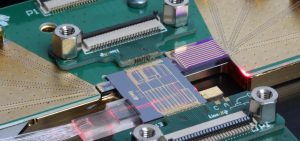Cost of Manufacturing Rigid Flex Boards
Rigid flex circuit boards offer flexibility and structural integrity, which makes them suitable for many industries, including automotive, aerospace, medical, and consumer electronics. They provide an efficient means of handling currents that generate heat and need to withstand harsh environments. However, rigid flex PCBs require more complex processes to fabricate and assemble than standard rigid PCBs, and this results in higher cost.
Some designers may opt to eschew rigid flex boards for cheaper alternatives, but this would be a costly mistake in the long run. Cheaper alternatives cut corners in the design, manufacturing and assembly process, resulting in thermal issues, electrical performance problems, mechanical failures, and reduced lifespans of the circuitry.

The primary factors that influence the cost of manufacturing rigid flex board include material type, fabrication processes, and layouts. The best way to lower the overall costs of a PCB is to use high-quality rigid flex circuit board materials that are both thermally stable and flexible, such as FR-4 or CEM-1. This will save time and money during the assembly and test phase of the project.
Factors That Influence the Cost of Manufacturing Rigid Flex Boards
Another cost factor is the number of layers on your flex circuit board. Keeping the layer count low will minimize the amount of prepreg needed to build your circuit, which in turn will reduce the total cost. Moreover, the choice of coverlay and solder mask should also be taken into account as these can affect the final cost of the flex circuit board.
Other factors that can drive up the cost of your rigid flex circuit board are the types of stiffeners and adhesives used. These can change the thickness of the circuit and alter the temperature reliability, signal performance, and mechanical properties of your product. A good stiffener material will allow your rigid flex board to bend without cracking or breaking, and it should be attached with thermal set and pressure-sensitive adhesives.
Lastly, the type of surface finish on your rigid flex circuit board also has an impact on its overall cost. A durable, high-performance finish can help you save on rework costs and improve the quality of your product.
In order to improve your manufacturing yields, a rigid flex manufacturer should incorporate a technique called “pouching” to protect the flex arm during outer layer production. This will prevent the flex arm from getting damaged during the outer layer manufacturing process, which in turn will lower the cost of your rigid flex PCB.
In addition to this, a rigid flex manufacturer should also ensure that the buried vias are properly positioned on the rigid flex circuit board. This will not only assure excellent layer-to-layer connectivity but will also increase its current-carrying capability. A well-placed buried via should be perpendicular to the neutral bending axis and should be located between the rigid and flex sections. In addition, the rigid to flex transition areas should have strain relief beading to further reduce cost.